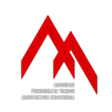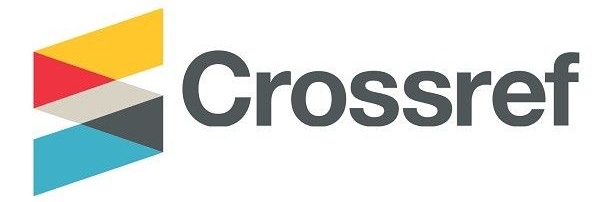Hubungan Nilai-nilai Pola Pikir dan Perilaku Ramah Lingkungan Siswa Sekolah Dasar Adiwiyata
DOI:
https://doi.org/10.21776/ub.ruas.2020.018.02.3Keywords:
Adiwiyata, behavior, environmental education, GEB, NEP, schoolAbstract
The declining quality of the environment lately requires a change in human’s environmental value and behavior. This change can be achieved through environmental education in schools. Indonesia has recently promoted the Adiwiyata school program to encourage environmental education. This study aims to reveal the dimensions of value (NEP) and behavior (GEB) that occur in students at Adiwiyata school and explain the relationship between the two to evaluate the extent to which Adiwiyata's concepts can interfere with students' thought patterns and behavior. Through principal component analysis and factor analysis, six dimensions of student’s NEP were found in Adiwiyata Elementary School, respectively: "Destructive Interventions", "Conservative Interventions", "Exploitation of Nature", "Environmental Education", "Sustainable Environments", and "Environmental Insights". Besides, four dimensions of student’s GEB were found at Adiwiyata Elementary School, respectively: "Pro-Environmental Attitudes (Individual)", "Pro-Environmental Attitudes (Group)", "Waste of Natural Resources & Energy", and "Efficiency of Natural Resources & Energy". Furthermore, correlation analysis shows that these values and behavior tend to only be realized in the school environment.
References
Chawla, L. (1999). Life Paths Into Effective Environmental Action. The Journal of Environmental Education, 31(1), 15-26. doi:10.1080/00958969909598628
Corraliza, J. A., Collado, S., & Bethelmy, L. (2013). Spanish Version of the New Ecological Paradigm Scale for Children. Spanish Journal of Psychology, 16(27), 1-8. doi:10.1017/sjp.2013.46
De, A. K., & De, A. K. (2004). Environmental Education. New Delhi: New Age International Ltd.
Dunlap, R. E., & Van-Liere, K. D. (1978). The "New Environemntal Paradigm". Journal of Environmental Education, 9(4), 10-19.
Dunlap, R. E., Van-Liere, K. D., Mertig, A. G., & Jones, R. E. (2000). Measuring endorsement of the New Ecological Paradigm: a revised NEP scale. Journal of Social Issues, 56(3), 425-442.
Evans, G. W., Brauchle, G. H., & Shapiro, E. (2007). Young Children's Environemntal Attitudes and Behaviors. Environment and Behavior, 39(5), 635-658.
Ghaziani, R. (2008). Children's voices: raised issues for school design. CoDesign, 4(4), 225-236. doi:10.1080/15710880802536403
Gusti, A., Isyandi, B., Bahri, S., & Afandi, D. (2015). HUBUNGAN PENGETAHUAN, SIKAP DAN INTENSI PERILAKU PENGELOLAAN SAMPAH BERKELANJUTAN PADA SISWA SEKOLAH DASAR DI KOTA PADANG. Dinamika Lingkungan Indonesia, 2(2), 100-107.
Hungerford, H. R., & Volk, T. L. (1990). Changing Learner Behavior Through Environmental Education. The Journal of Environmental Education, 21(3), 8-21. doi:doi:10.1080/00958964.1990.10753743
Johnson, R. A., & Wichern, D. W. (1998). Applied Multivariate Statistical Analysis. New Jersey: Prentice-Hall International Inc.
Kaiser, F. G. (1998). A General Measure of Ecological Behavior. Journal of Applied Social Psychology, 28(5), 395-442.
Kaiser, H. F. (1960). THE APLICATION OF ELECTRONIC COMPUTERS TO FACTOR ANALYSIS. Educational and Psychological Measurement, XX(1), 141-151. doi:10.1177/001316446002000116
Kementerian Lingkungan Hidup. (2012). Buku Panduan Pelaksanaan Program Adiwiyata. Jakarta: Kementerian Lingkungan Hidup.
Kementerian Lingkungan Hidup. (2013). Permen LH No. 05 Tahun 2013 Tentang Pedoman Pelaksanaan Program Adiwiyata. Jakarta: Kementerian Lingkungan Hidup.
Kollmus, A., & Agyeman, J. (2002). Mind the Gap: Why do people act environmentally and what are the barriers to pro-environmental behavior? Environmental Education Research, 8(3), 239-260. doi:10.1080/13504620220145401
Kurisu, K. (2015). Pro-evironmental Behaviors. Tokyo: Springer.
Kusuma, Y., Kusuma, H. E., Tampubolon, A. C., & Aryanti, T. (2019). Pengaruh Kualitas Lingkungan dan Motivasi pada Kinerja Akademik Siswa SMA. RUAS (Review of Urbanism and Architectural Studies), 16(2), 28-41.
Manoli, C. C., Johnson, B., & Dunlap, R. E. (2010). Assessing Children's Environmental Worldviews: Modifying and Validating the New Ecological Paradigm Scale for Use With Children. The Journal of Environmental Education, 38(4), 3-13. doi:10.3200/JOEE.38.4.3-13
Manurung, Y. L. (2011). PROGRAM ADIWIYATA DALAM PENGELOLAAN LINGKUNGAN SEKOLAH (studi kasus SDN Panggung 04 Kecamatan Jepara Kabupaten Jepara Provinsi Jawa Tengah). Universitas Diponegoro.
Rahmawati, I., & Suwanda, I. M. (2015). Upaya Pembentukan Perilaku Peduli Lingkungan Siswa Melalui Sekolah Adiwiyata di SMP Negeri 28 Surabaya. Kajian Moral dan Kewarganegaraan, 1(3), 71-88.
Saifuddin, A. (2001). Metode Penelitian. Yogyakarta: Pustaka Belajar.
Saragih, A. A. (2012). Pengaruh Program Adiwiyata Terhadap Kognitif Afektif Dan Psikomotorik Lingkungan Hidup Siswa Sekolah Dasar Di Kota Medan (Studi Kasus di SD Swasta Pertiwi dan SD Negeri 060843 Kec. Medan Barat). Universitas Sumatera Utara.
Sujiono, Y. N. (2009). Konsep Dasar Pendidikan Anak Usia Dini. Jakarta: PT. Indeks.
Tucker, R., & Izadpanahi, P. (2017). Live green, think green: Sustainable school architecture and children’s environmental attitudes and behaviors. Journal of Environmental Psychology, 51(2017), 209-216. doi:10.1016/j.jenvp.2017.04.003
UNESCO. (2018, March 3). Promoting Adiwiyata Green Schools and Empowering Low Income Communities for Sustainable Future of Indonesia. Diambil kembali dari UNESCO: http://www.unesco.org/new/en/jakarta/education/education-for-sustainable-development/promoting-adiwiyata-green-schools/
White, R., & Stoecklin, V. L. (2008). Nurturting Children's Biophilia: Developmentally Appropriate Environmenta Education for Young Children. Dipetik September 27, 2018, dari LIve-Learn: https://www.live-learn.org/resources/teachers/A_Sense_of_Place_Conference/Biophilia.pdf
Widiyaningrum, P., Lisdiana, L., & Purwantoyo, E. (2015). Evaluasi Partisipasi Siswa Dalam Pengelolaan Sampah Untuk Mendukung Program Sekolah Adiwiyata. Indonesian Journal of Conservation, 4(1), 74-82.
Downloads
Published
How to Cite
Issue
Section
License
Authors who publish with this journal agree to the following terms:
- Authors retain copyright and grant the journal right of first publication with the work simultaneously licensed under a Creative Commons Attribution License that allows others to share the work with an acknowledgement of the work's authorship and initial publication in this journal.
- Authors are able to enter into separate, additional contractual arrangements for the non-exclusive distribution of the journal's published version of the work (e.g., post it to an institutional repository or publish it in a book), with an acknowledgement of its initial publication in this journal.
- Authors are permitted and encouraged to post their work online (e.g., in institutional repositories or on their website) prior to and during the submission process, as it can lead to productive exchanges, as well as earlier and greater citation of published work (See The Effect of Open Access).












